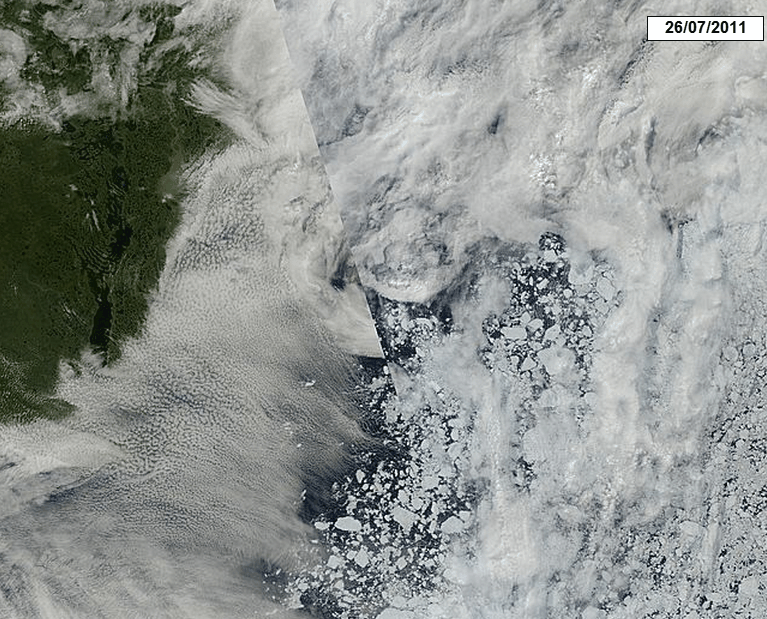These ice floes are only 5-15 miles wide and 2-4 metres thick. Can they support a full grown Polar Bear?
http://www.arctic.io/observations/8/2011-07-26/6-N75.319695-W135.468616
Hudson Bay has been ice free for about a week. The entire Hudson Bay bear population will certainly go extinct, because bears can not survive without ice.



Breaking news…
Global Warming is forcing behaviour changes in polar bear populations. Pedestrians in Churchill report being pestered by polar bears panhandling for spare ice
Does a polar bear use more energy swimming or walking?
Why do you believe those floes are 4 metres thick?
http://www7320.nrlssc.navy.mil/hycomARC/navo/arcticictn_nowcast_anim30d.gif
That model also thinks the ice concentration is around 80%. Something is wrong. It did the same for this time last year. Look at the model for August last year – the first 30 or so frames of this gif: http://www7320.nrlssc.navy.mil/hycomARC/navo/arcticictn_nowcast_anim365d.gif
You have ice that it thinks is 90% concentration, 4-5 metres thick vanishing completely within a fortnight. For whatever reason, it failed to accurately model the melting in the Beaufort last year – presumably the ice was not as thick or robust as the model predicted – and it looks to me like it’s doing the same again this year. Its concentration estimates are way out of line with the observable reality: thickness estimates may well be the same.
The satellite imagery looks like 80% concentration
I thought polar bears couldn’t survive without poles.
Polar Bears can survive just about anything, but being Bi_____.
http://www.corbisimages.com/stock-photo/rights-managed/42-15901798/girl-on-polar-bear-rug